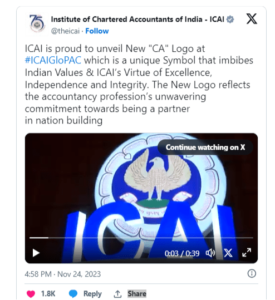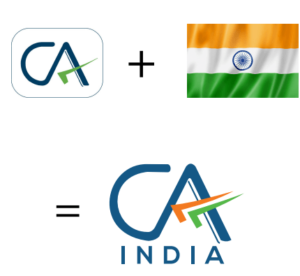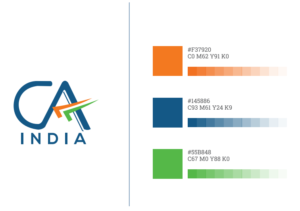Tips to Ace the CA Foundation Exams in June 2024
Introduction
CA Foundation exams mark the first significant milestone in the journey towards becoming a Chartered Accountant (CA). As one of the most respected and rewarding professions in the finance and accounting sector, the CA designation opens doors to numerous career opportunities. If you are preparing for the CA Foundation exams scheduled from June 20 to June 26, 2024, you must have a comprehensive and strategic preparation plan. This blog provides essential details about the CA Foundation exams and offers valuable tips to help you ace your exams with confidence.
CA Foundation Exam Details
| Particulars | Details |
| Name of Exam | CA Foundation |
| Governing Body | Institute of Chartered Accountants of India (ICAI) |
| Number of Subjects | Four |
| Subjects | – Principles and Practice of Accounting, Business Laws and Business Correspondence and Reporting, Business Mathematics and Logical Reasoning & Statistics, Business Economics and Business and Commercial Knowledge |
| Preparation Period | 4 Months |
| Eligibility Criteria | Appeared or Completed Class 12th |
| Passing Criteria | Each Subject – 40% Aggregate – 50% |
| Mode of Exam | Offline |
| Exam Pattern | Subjective and Objective |
| Last Date of Registration | 10 August 2024 |
| Exam Dates | June 20 to June 26, 2024 |
| Exam Frequency | 3 Times a year |
| Results Announcement | August/September |
Eligibility Criteria for CA Foundation Exam
To be eligible for the CA Foundation exams, students must meet specific criteria set by ICAI:
- Educational Qualification: Students must have passed or appeared in the Class 12th examinations conducted by a recognized examination body.
- Registration: Students must complete their CA Foundation registration with ICAI before the specified deadline, which for the September 2024 attempt is August 10, 2024.
- Study Period: Candidates must undergo a minimum of four months of study period after registration before appearing for the exam.
- Provisional Registration: Students who have passed their Class 10 exams can provisionally register for the CA Foundation course. They need to submit a scanned copy of their Class 12 admit card instead of the mark sheet if awaiting results.
CA Foundation Exam Pattern
Understanding the exam pattern is crucial for effective preparation. The CA Foundation exam comprises four papers, each designed to test different skill sets and knowledge areas.
| Paper Number | Subject | Type of Exam | Duration |
| Paper 1 | Principles and Practice of Accounting | Subjective | 3 Hours |
| Paper 2 | Business Laws and Business Correspondence and Reporting | Subjective | 3 Hours |
| Paper 3 | Business Mathematics, Logical Reasoning & Statistics | Objective | 2 Hours |
| Paper 4 | Business Economics and Business and Commercial Knowledge | Objective | 2 Hours |
Also Read : https://mastermindsindia.com/ca-foundation-pen-drive-classes/
Key Points:
- Mode of Exam: Offline, paper-based
- Marking Scheme: No negative marking for subjective papers (Paper 1 and 2). For objective papers (Paper 3 and 4), there is a negative marking of 1/4 mark for every wrong answer.
- Medium of Exam: English/Hindi (except Section B of Paper 2, which is in English only)
Preparation Tips for CA Foundation Exams
Preparation for the CA Foundation exams requires a blend of strategic planning, rigorous practice, and maintaining a healthy lifestyle. Here are some tips to guide your preparation:
- Focus on Conceptual Understanding
The CA Foundation exams demand a deep understanding of concepts rather than rote learning. Spend time comprehending accounting principles, business laws, mathematical techniques, and economic theories. Make sure you can apply these concepts to solve practical problems. Use textbooks, reference materials, and online resources to clarify your doubts. Engage with peers, mentors, and instructors to reinforce your understanding.
- Create a Structured Study Plan
Draft a detailed study plan that covers all subjects and allocates sufficient time for each topic. Break down the syllabus into manageable sections and set daily, weekly, and monthly goals. Ensure your study plan includes time for revision and practice tests.
- Practice with Mock Tests and Previous Year Papers
Regular practice is key to success in the CA Foundation exams. Solve as many mock tests and previous year question papers as possible. This will help you get familiar with the exam pattern, improve time management skills, and identify areas where you need more practice. Analyze your performance in these tests to understand your strengths and weaknesses.
- Stay Updated with Current Affairs
The Business Economics and Business and Commercial Knowledge paper requires you to be well-versed with current affairs and business news. Read newspapers, financial magazines, and online publications regularly. Stay informed about significant economic events, corporate developments, and government policies.
- Maintain a Healthy Lifestyle
A healthy mind resides in a healthy body. Do not neglect your physical and mental health during your preparation. Ensure you get adequate sleep, eat a balanced diet, and exercise regularly. Include short breaks in your study schedule to relax and rejuvenate. Practice relaxation techniques like meditation and yoga to manage stress effectively.
- Use Effective Study Techniques
Adopt study techniques that enhance your learning efficiency. Techniques such as active recall, spaced repetition, and the Feynman technique can be very effective. Use visual aids like charts, diagrams, and mind maps to remember complex information.
- Join Study Groups
Joining a study group can provide a platform for discussion, doubt clearing, and knowledge sharing. It can also help keep you motivated and accountable.
Watch the video of expert for more insights on CA Foundation Preparation
By following these tips and maintaining a disciplined approach, you can confidently prepare for and excel in the CA Foundation exams.
Conclusion
The CA Foundation exams are a significant step towards a rewarding career in Chartered Accountancy. With the right approach and diligent preparation, you can excel in these exams. Focus on building a strong conceptual foundation, practice regularly, stay updated with current affairs, and maintain a healthy lifestyle. Remember, consistency and perseverance are key to success.
Frequently Asked Questions
Q1. What are the dates for the CA Foundation exam in June 2024?
Ans: The CA Foundation exam is scheduled from June 20 to June 26, 2024.
Q2. Can the CA Foundation exams be taken three times a year?
Ans: Yes, the CA Foundation exams are conducted three times a year in January, June, and September.
Q3. What is the last date for CA Foundation exam registration for September 2024?
Ans: The last date for CA Foundation exam registration for the September 2024 attempt is August 10, 2024.
Q4. Is there any negative marking in the CA Foundation exams?
Ans: Yes, there is negative marking of 1/4 mark for every wrong answer in the objective papers (Paper 3 and 4). However, there is no negative marking for subjective papers (Paper 1 and 2).
Q5. What is the passing criteria for the CA Foundation exams?
Ans: To pass the CA Foundation exams, you need to score at least 40% in each subject and an aggregate of 50% overall.









